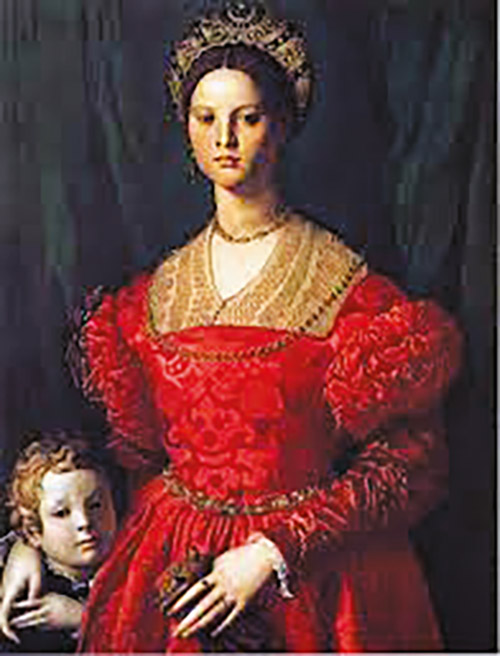
Tiberias is a rather miraculous city on the Sea of Galilee. It is the resting place of the Master of Miracles, Rabbi Meir Baal Hanes, one of the most important sages of the second century C.E. Thanks to another miracle worker, Doña Gracia Mendes, Tiberias became a sanctuary for Jews during the Spanish and Portuguese expulsions and inquisitions of the 1500s. It is also the home of the Doña Gracia Mendes Museum, located in a former palace that is now a charming hotel.
That port city was part of the Ottoman Empire, which extended to three continents, from the Balkans in southeastern Europe across Anatolia, Central Asia, Arabia and North Africa. By the 20th century, the empire’s power had declined. Becoming Germany’s ally in WWI spelled its demise and in 1922, Palestine came under British Mandatory rule, where it would remain until 1948 when Israel became independent.
Unlike Queen Esther, Doña Gracia didn’t marry a monarch. Like Esther she dressed in queenly garments and summoned up the courage to meet with royals and the Church hierarchy. And like Esther, Doña Gracia was forced to hide her Jewish identity to help her people.
Her ancestors fled to Spain after the Roman destruction of the Second Temple, followed by the expulsion and ravaging of the Land of Israel. There. Jews found refuge, survived and thrived, particularly her family, at least until 1492. In that year, the Catholic monarchs, Ferdinand and Isabella, proclaimed that all non-Catholics had to convert.
These were not conversions of choice. Refusal led to expulsion, which was extremely difficult, demanding and dangerous.
Jews were required to leave behind their property and set out into the unknown. Those fleeing overland faced the threat of encountering highwaymen, who robbed, raped, killed or sold their victims into slavery. Those who fled by ships were at the mercy of captains who charged exorbitant fares and were not above cutting passengers open to search for swallowed jewels, then throwing them overboard. Those fortunate enough to engage with honest, compassionate captains often faced tempestuous storms and shipwrecks. If nature was cooperative, the danger was pirates, the highwaymen of the sea.
The fortunate arrived at their destinations with life, limb and what little property they had left intact. Young children were considered property of the crown or Church, thus limiting those willing to risk expulsion. To understand all these factors, aside from those of the difficulties incumbent on all refugees, including having to leave elderly and infirm family members behind, is to understand that forced conversion was a choiceless choice with limited benefits.
Since its establishment as a state religion, the Church had pressured Jews to convert to Christianity. Living as a Jew in Christendom was costly and often fatal, even after conversions of choice. Although the Church welcomed converts, Christians often regarded New Christians with distrust and suspicion. They were verbally abused and physically attacked.
It would take generations for the “converted” to gain popular acceptance. This became a caste system based on ancestry, depending on how far removed descendants of Jews (and Moors/Muslims) were from their ancestors who converted to Christianity, with new Christians on the lowest rung. The Nazis and other racists would adopt this form.
Beatricia (Hanna) de Luna, aka Doña Gracia Mendes, aka La Doña or La Señora (The Lady) was from a family of Anusim. Her father, Alvaro de Luna, had been forcibly converted in Aragon in 1492. The de Lunas and many converted Jews soon fled to neighboring Portugal, where she was born in 1510.
She was married to Francisco Mendes (born Tzemach Benveniste) in 1528, bore him a daughter, and was widowed within a decade. Her husband left his massive global financial empire to her and his brother, Diogo, who became her business partner in a number of family enterprises. She also established her own businesses.
The wealthiest (non-royal) woman of that era, she used her money and position to protect her fellow Jews and establish escape routes for them. Many European monarchs were eager to marry her daughter, Ana. It took a great deal of diplomatic maneuvers on Doña Gracia’s part to avoid that trap which would have cost a substantial amount of the family’s wealth—and most importantly, its connection to Judaism. She succeeded, and Ana eventually married another converso, Don Joseph Nasi. A measure of Doña Gracia’s influence was her ability to gain permission from the Pope to have her husband’s remains disinterred and buried in Jerusalem.
In 1536, she left her native land for Antwerp where the family had offices. In time, she would move to Venice then Ferrara, where she could finally live as a Jew, using her Jewish name Hana Nasi. She established synagogues, yeshivas and printing houses to supply holy books, to resupply what had been burned by the Inquisition. Extremely philanthropic, she used her wealth to support needy Jews.
Eventually she settled in Istanbul, where Jews were more comfortable than in Christian Europe. Not only did the Ottoman Empire welcome Jews, Sultan Suleiman the Magnificent declared that Ferdinand’s folly impoverished Spain and enriched his own empire. He also sought advice from Doña Gracia and Don Joseph Nasi.
Doña Gracia leased Tiberias from the Sultan, who was eager to turn the backwater into a vibrant, financially viable area. Her interest was spiritual, altruistic and possibly also commercial. She saw the ancient port city as an autonomous sanctuary for Jews fleeing Spain and Portugal as well as Europe. Indeed, that’s what it became. One might say that she was a proto-Zionist centuries before Theodore Herzl was born.
She, herself, was never privileged to live in the Promised Land. She died before her 60th year but is remembered as a great blessing. On Purim, we honor Queen Esther, and perhaps we should also draw inspiration from other Jewish heroines, including Doña Gracia.
By Barbara Wind









